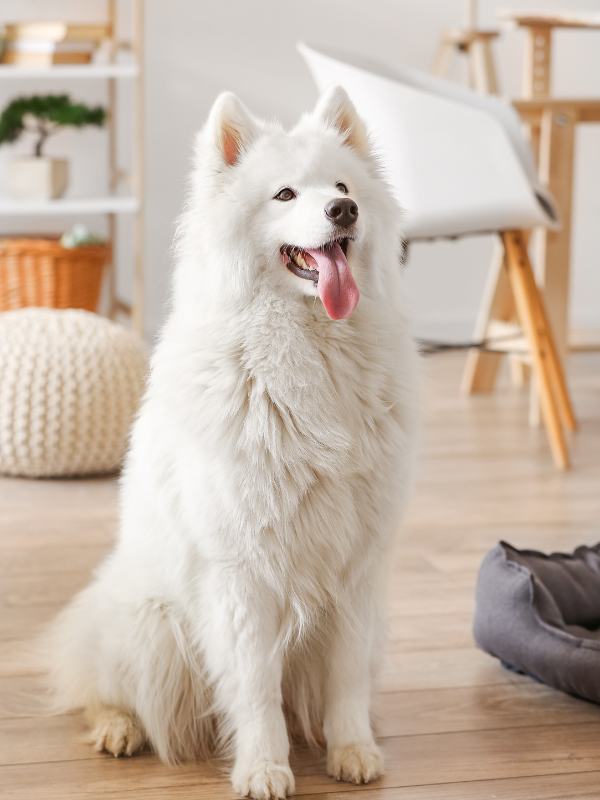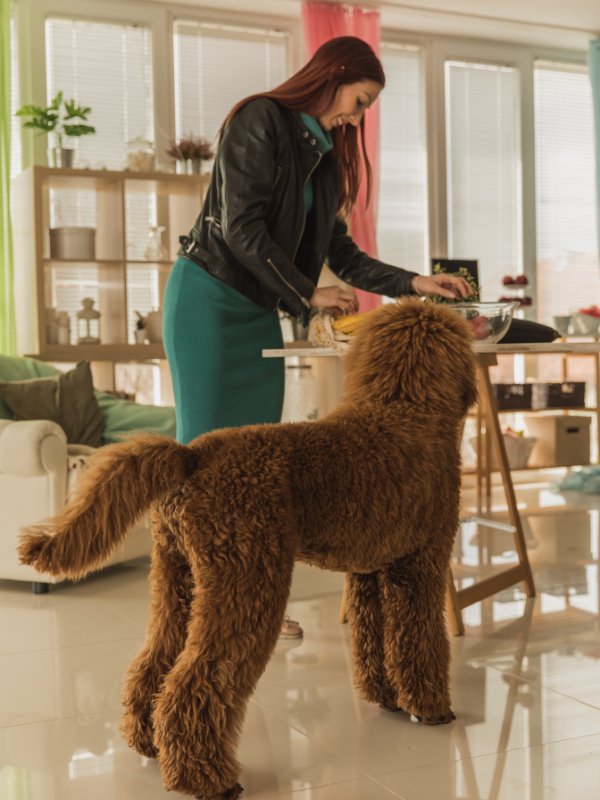737-215-3211

Training Your Dog to Eliminate Separation Anxiety: A Comprehensive Guide
Owning a dog brings immense joy and companionship to our lives. However, when our furry friends struggle with separation anxiety, it can be distressing for both them and us. Separation anxiety is a condition where dogs experience intense fear and anxiety when left alone. This can lead to destructive behaviors, excessive barking, and even self-harm.
Fortunately, with the right training and guidance, you can help your dog overcome separation anxiety and create a calmer, more balanced environment for both of you. In this article, we will explore effective techniques, practical strategies, and expert advice to address separation anxiety in dogs.
Understanding Separation Anxiety in Dogs
Separation anxiety is a condition that stems from fear and anxiety when a dog is separated from its owner or left alone. It can be triggered by various factors, such as previous traumatic experiences or lack of proper socialization. Understanding the root causes of separation anxiety is crucial in developing effective training methods to alleviate the condition.
Recognizing the Signs of Separation Anxiety
To effectively address separation anxiety, it's important to recognize the signs and symptoms displayed by your dog. These signs may include excessive barking, destructive behaviors, pacing, drooling, or attempts to escape. By being aware of these behaviors, you can take proactive measures to address the anxiety and create a more comfortable environment for your dog.
Creating a Safe and Comfortable Space
Creating a safe and comfortable space for your dog is an essential step in helping them feel secure when left alone. This can be achieved by designating a specific area in your home where your dog can retreat to, such as a cozy crate or a quiet room. Providing familiar items, such as their bed, toys, and blankets, can also help establish a sense of security.
Gradual Desensitization Techniques
Gradual desensitization involves exposing your dog to progressively longer periods of separation in a controlled and positive manner. This technique helps them build confidence and overcome anxiety gradually. By starting with short departures and gradually extending the time, you can help your dog adjust to being alone without triggering anxiety.
Implementing Positive Reinforcement
Positive reinforcement is a powerful tool in dog training, including addressing separation anxiety. By rewarding desired behaviors, such as calmness or engaging with interactive toys, you can reinforce positive associations with being alone. Treats, praise, and affection are effective rewards that can motivate and encourage your dog's progress.
Engaging Your Dog's Senses
Engaging your dog's senses can provide mental stimulation and distraction from anxiety. Interactive toys, puzzle feeders, and treat-dispensing toys can keep them occupied and entertained while you are away. These toys tap into their natural instincts and help redirect their focus away from anxiety-inducing thoughts.
The Role of Exercise in Reducing Anxiety
Regular exercise is vital for a dog's physical and mental well-being. Engaging in physical activities, such as walks, runs, or play sessions, can help reduce anxiety by releasing excess energy and promoting relaxation. Incorporate exercise into your dog's routine to help them stay calm and balanced.
Seeking Professional Help
In severe cases of separation anxiety, it may be necessary to seek professional help from a certified dog behaviorist or trainer. These experts have the knowledge and experience to develop personalized training plans and provide guidance tailored to your dog's specific needs. Consulting with a professional can greatly improve the success of your training efforts.
Introducing Counterconditioning
Counterconditioning involves changing your dog's emotional response to being alone through positive associations. This technique often involves associating departure cues, such as picking up keys or putting on a coat, with pleasant experiences like treats or interactive play. Over time, your dog will learn to associate these cues with positive feelings, reducing anxiety.
Managing Departures and Arrivals
The way you handle departures and arrivals can impact your dog's anxiety levels. Avoid making departures overly dramatic or emotional. Instead, adopt a calm and matter-of-fact approach to reassure your dog. Similarly, when returning home, allow your dog to calm down before engaging in excited greetings. This helps create a sense of normalcy and reduces anxiety.
Interactive Toys and Puzzles
Interactive toys and puzzles provide mental stimulation and engagement for dogs. They can help redirect their focus from anxiety to problem-solving and play. Consider incorporating puzzle toys, treat balls, or Kong toys filled with frozen peanut butter to keep your dog occupied and mentally stimulated during your absence.
Establishing a Consistent Routine
Dogs thrive on routine and predictability. Establishing a consistent daily routine can help alleviate separation anxiety by providing a sense of structure and stability. Set regular times for feeding, exercise, play, and rest. By sticking to a consistent routine, your dog will feel more secure and better equipped to handle periods of separation.
Utilizing Calming Aids
Calming aids, such as pheromone diffusers or sprays, can help create a soothing environment for your dog. These products release synthetic pheromones that mimic the calming scent produced by mother dogs, promoting a sense of security and relaxation. Consult with your veterinarian to determine if calming aids are appropriate for your dog's specific needs.
Using Crate Training Effectively
Crate training can be an effective tool in managing separation anxiety. When introduced properly, crates provide a safe and comfortable den-like space for your dog. They can feel secure and protected in their crate, reducing anxiety. Gradually acclimate your dog to the crate using positive reinforcement, and never use it as a form of punishment.
The Power of Medication
In severe cases of separation anxiety, medication prescribed by a veterinarian may be necessary to provide relief and support your dog's training progress. Anti-anxiety medications can help reduce anxiety levels and create a calmer state of mind. However, medication should always be used in conjunction with training techniques and under professional guidance.
Natural Remedies and Supplements
If you prefer a more natural approach, certain herbal remedies and supplements can help calm your dog's anxiety. Products containing ingredients like chamomile, valerian root, or lavender have soothing properties that can promote relaxation. Always consult with your veterinarian before introducing any natural remedies or supplements.
Incorporating Relaxation Techniques
Relaxation techniques, such as massage or aromatherapy, can help soothe anxious dogs. Gentle massages can release tension and promote a sense of calmness. Similarly, diffusing calming essential oils like lavender or chamomile in the environment can create a relaxing atmosphere. However, ensure that your dog shows no signs of discomfort or adverse reactions to these techniques.
The Impact of Socialization
Proper socialization plays a crucial role in preventing separation anxiety. Expose your dog to various environments, people, and other animals from an early age. This helps them develop confidence, adaptability, and resilience, making them less prone to anxiety when faced with new situations or being alone.
Patience and Persistence
Addressing separation anxiety in dogs requires patience and persistence. Every dog is unique, and progress may vary. Be consistent in your training efforts and adapt techniques to suit your dog's individual needs. With time, dedication, and a positive mindset, you can help your furry friend overcome separation anxiety and lead a happier, more relaxed life.
Understanding Regression
During the training process, it's common for dogs to experience regression. Regression refers to a temporary setback in progress, where previously learned behaviors may resurface. This can be frustrating but is a natural part of the training journey. Remain patient, continue practicing techniques, and reinforce positive behaviors to overcome regression.
Preventing Separation Anxiety
Prevention is key when it comes to separation anxiety. Start training and acclimating your dog to being alone from an early age. Gradually increase periods of separation, expose them to various environments, and reinforce positive associations. By laying a solid foundation of independence and confidence, you can prevent separation anxiety before it becomes a problem.
Promoting Independence
Encouraging independence in your dog is essential for combating separation anxiety. Gradually reduce over-reliance on constant attention and gradually increase periods of alone time. Provide stimulating toys, engage in interactive play, and encourage self-soothing behaviors. Teaching your dog to enjoy their own company fosters independence and reduces anxiety.
Building Trust and Confidence
Building trust and confidence in your dog is a fundamental aspect of addressing separation anxiety. Use positive reinforcement techniques to reward desirable behaviors and create a bond of trust. By consistently demonstrating reliability and dependability, you can help your dog feel secure and confident, even when you are not present.
Maintaining a Stress-Free Environment
Maintaining a stress-free environment is crucial for dogs with separation anxiety. Reduce environmental triggers that may contribute to anxiety, such as loud noises or sudden changes. Provide a calm and peaceful living space, free from unnecessary stressors. This serene environment can aid in creating a sense of security for your dog.
FAQs
Q: How long does it take to train a dog to overcome separation anxiety?
Training time can vary depending on the dog and the severity of the anxiety. It can take weeks to months to see significant improvements. Consistency, patience, and professional guidance can help speed up the training process.
Q: Can separation anxiety in dogs be cured completely?
While some dogs may make a full recovery, others may require ongoing management. With the right training and support, most dogs can learn to cope with separation and experience a significant reduction in anxiety.
Q: Are certain dog breeds more prone to separation anxiety?
Certain breeds, such as Labrador Retrievers, German Shepherds, and Border Collies, are known to be more susceptible to separation anxiety. However, any dog, regardless of breed, can develop separation anxiety based on their individual experiences and temperament.
Q: Can I leave my dog alone with separation anxiety?
Leaving a dog with separation anxiety alone for extended periods can exacerbate their anxiety and lead to destructive behaviors. Gradual desensitization and proper training techniques should be implemented to help them overcome their anxiety before leaving them alone.
Q: Can separation anxiety cause health problems in dogs?
Yes, severe separation anxiety can take a toll on a dog's physical and mental health. Chronic stress and anxiety can lead to digestive issues, weight loss, self-injury, and other related health problems. It's crucial to address separation anxiety to protect your dog's overall well-being.
Q: Should I punish my dog for exhibiting separation anxiety behaviors?
Punishment is not an effective approach when dealing with separation anxiety. It can increase fear and worsen the anxiety. Positive reinforcement, patience, and consistent training methods are more successful in helping your dog overcome separation anxiety.
Conclusion
Training your dog to eliminate separation anxiety is a journey that requires time, effort, and understanding. By implementing the techniques and strategies outlined in this comprehensive guide, you can help your furry friend find comfort, overcome anxiety, and develop a sense of security when left alone. Remember, each dog is unique, so tailor your approach to meet their specific needs. With dedication, patience, and a supportive environment, you can make a positive difference in your dog's life.





Leave a comment